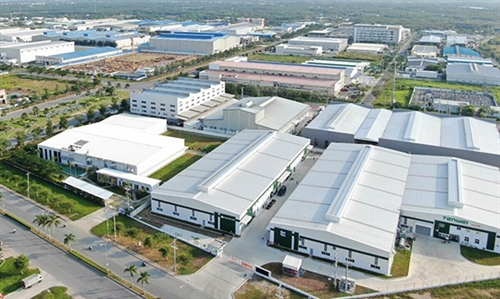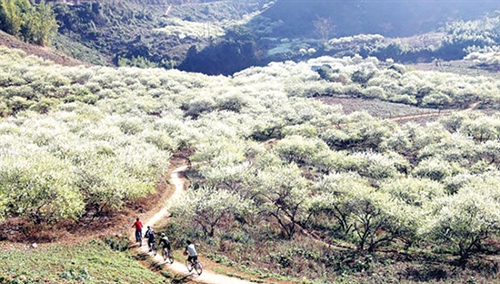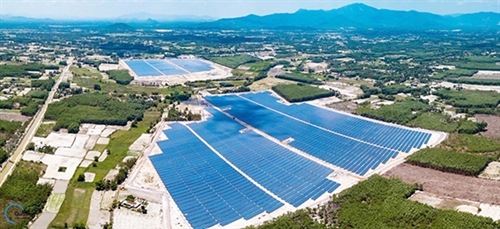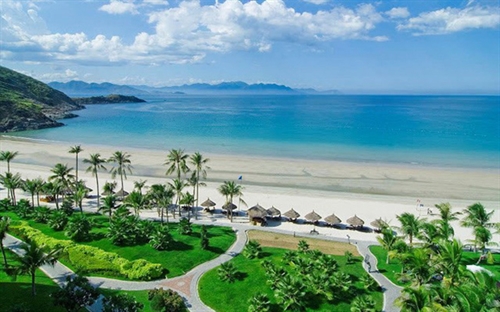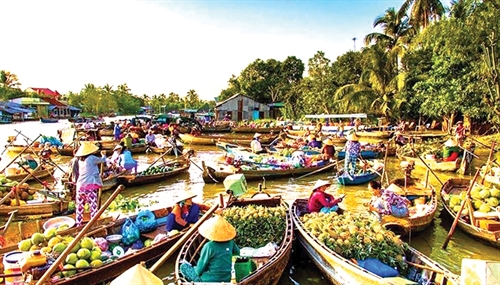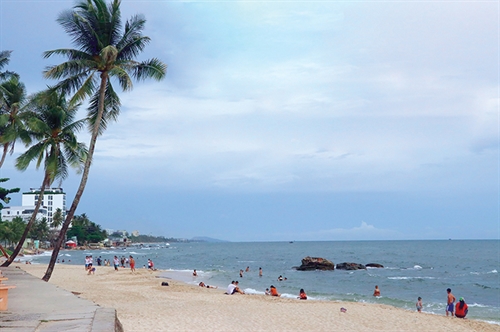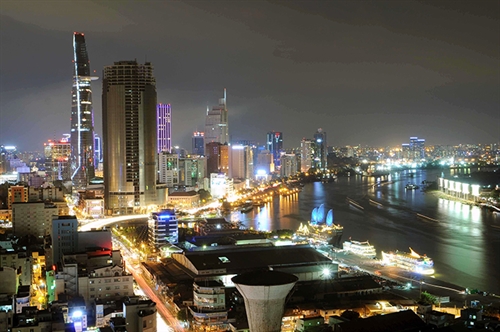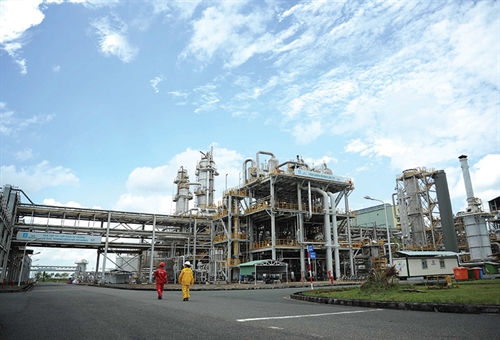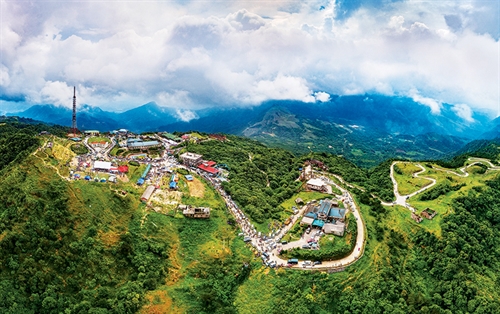As a northern coastal province in the Red River delta and surrounded by Hoa and Luoc tributaries of the Thai Binh river system, Thai Binh province is described as a floating island. It borders the provinces of Ha Nam to the west, Nam Dinh to the southwest, Hung Yen and Hai Duong provinces and Hai Phong city to the north, and the East Sea to the east. Covering 1,586 square kilometers, Thai Binh province has a population of some 1.86 million. It has a provincial city with the same name and seven districts, namely Hung Ha, Dong Hung, Kien Xuong, Vu Thu, Quynh Phu, Thai Thuy and Tien Hai.
Preparations for FDI waves
As Thai Binh regards success of investors in the locality as its impetus for development, the province has constantly improved its business and investment environment.
A noteworthy point is the province’s rank in the 2020 Provincial Competitiveness Index (PCI) ranking and the 2020 Provincial Governance and Public Administration Performance Index (PAPI) rankings. With a score of 64.02 points, Thai Binh jumped three places to 25th out of 63 provinces and cities nationwide and 5th among 11 localities in the Red River delta in the 2020 PCI ranking. For the fourth year in a row, Thai Binh made its leap in the PCI ranking thanks to its high scores in four out of 10 sub-indices - entry costs, time costs and regulatory compliance, policy bias, and law and order. The province also climbed 13 places to 20th out of 63 provinces and cities nationwide in the 2020 PAPI rankings.
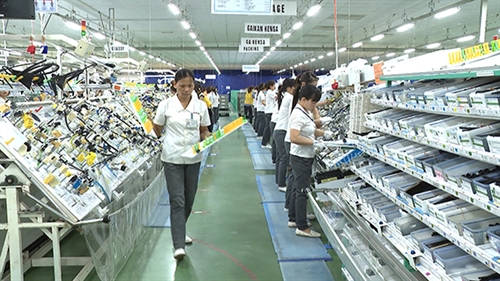 |
Inside a workshop of Japanese Yazaki company in Thai Binh province Photo: https://www.thaibinhtv.vn/ |
“Thai Binh province boasts a favorable geographic location, huge potential of natural gas, solar and wind energy, convenient road, river and sea transport system, and high-quality human resources for attracting investors” (Vice Chairman of the Thai Binh People’s Committee Lai Van Hoan).
In addition, despite impacts of the COVID-19 pandemic, the provincial authorities have taken drastic measures to speed up the disbursement of public investment funds and site clearance for the implementation of many important transport projects. The most significant project is the one to build a 21.28-km road from Thai Binh city to the Nghin bridge spanning Hoa river. The road is expected to reduce traffic congestion on the section of National Highway 10 from the bridge to the S1 bypass and enhance traffic flows in Nam Dinh and Hai Phong once completed in 2023. The other project is formulated to build a 44.5-km coastal road linking Thai Binh with the Hanoi-Hai Phong-Quang Ninh economic development triangle as well as Nam Dinh and Thai Binh with Cat Bi International Airport in Hai Phong and seaports in Quang Ninh and Hai Phong. This project is expected to serve the Thai Binh Economic Zone (EZ) that embraces 30 communes and one township of Thai Thuy and Tien Hai districts.
At present, the 30,583-hectare Thai Binh EZ is one of existing 17 EZs in the country that functions as both an industrial cluster and a coastal service-trade and urban area.
In addition to the Government’s incentives, the provincial authorities offer their own incentives to new or expanded investment projects in the EZ. Investors will enjoy incentives in land access, support in building and operation of technical infrastructure facilities, building of centralized wastewater treatment systems, site clearance, completion of administrative formalities, and training of human resources. Investment priorities are given to building and commercially operating infrastructure facilities and concentrated wastewater treatment systems of industrial parks and industrial clusters for large-scale, state-of-the-art and environmentally friendly industries; commerce and services; and hi-tech agriculture.
To attract more investment capital, Thai Binh has also planned 15 industrial parks and 43 industrial clusters.
Thanks to local authorities and people’s constant efforts to bring into full play its potential and strengths, Thai Binh currently hosts almost 1,100 projects worth over VND 136 trillion (USD 5.9 billion). The figures include 92 valid foreign direct investment (FDI) projects totaling over USD 830 million. In the first quarter of this year, the province granted investment licenses to six projects and permitted three existing projects to add capital, bringing the total new and added capital to over VND 4.78 trillion (USD 207.9 million).
In the 2021-25 period, the province is calling for investment in 37 projects specialized in industry, agriculture-fisheries, trade-services, construction of infrastructure facilities of industrial parks and industrial clusters, transport infrastructure, environmental protection, and construction of hydraulic works and dikes.
These projects include a gas processing plant and a solid waste treatment plant, calling for FDI of at least USD 30 million each; an electronic component manufacturing and assembling plant and a scallop processing plant with an annual designed capacity of 70,000 tons, and capitalized at USD 50 million or more each. Thai Binh is also calling for investment of at least USD 100 million in building and exploiting marine ecotourism areas, VND 7 trillion (USD 304.5 million) in building a section of the Ninh Binh-Hai Phong-Quang Ninh expressway through Thai Binh province and at least VND 1 trillion (USD 43.5 million) in building a logistics service center for the next five years.
Efforts to become a key tourist destination
Thai Binh is the northern rice granary with vast green rice fields made fertile by the alluvium of the Red River delta and the Thai Binh river system. It is known as the cradle of Cheo (traditional opera) with almost 28 typical tunes preserved in Khuoc village, Phong Chau commune, Dong Hung district and the homeland of water puppet in Nguyen Xa commune, Dong Hung district. The locality is well-known for Dong Xam silver carving village in Kien Xuong district; Tan Le mat weaving village in Hung Ha district, Minh Lang embroidery village in Vu Thu district and An Long bronze casting village in Quynh Phu district.
The locality is also rich in history with six festivals recognized as national intangible cultural heritages. They include the Keo Pagoda Festival in Vu Thu district that commemorates Buddhist monk Duong Khong Lo who saved the life of King Ly Thanh Tong; the Tran Temple Festival that honors the Tran Dynasty (1225-1440) and the Tien La Temple Festival that is dedicated to female general Vu Thi Thuc who fought Chinese Han invaders under the leadership of national heroines Hai Ba Trung (Two Trung Sisters) almost 2,000 years ago in Hung Ha district. Other heritages in Quynh Phu district are the Dong Bang Temple Festival that worships Bat Hai Dong Dinh, the father of King Due Vuong, who made great contributions to the nation’s liberation; the A Sao Temple Festival that honors contributions of Tran Hung Dao who acted as the country’s commander-in-chief during the Tran Dynasty to repel Mongolian invaders in the 13th century; and the Long Khe Temple Festival that worships teacher of the prince Duong Khong Lo, mandarin Ly Thuong Kiet and saint Tran Hung Dao.
With a coastline of some 54 kilometers, Con Den and Con Vanh eco-tourist zones, many traditional specialties and natural and historical richness, Thai Binh is an ideal relaxing destination for visitors seeking tranquility.
Talking with the local newswire about orientations for Thai Binh’s tourism development, Director of the Thai Binh Department of Culture, Sports and Tourism Truong Thi Hong Hanh said that the hospitality sector was providing only sightseeing tours to festivals, relics, craft villages, historical and revolutionary relics and lacked recreation and deluxe leisure tours for domestic and foreign tourists.
Tourist activities and destinations remain closed and tourist destinations remain disconnected and have not been developed into stable tours and routes with convenient, diversified and attractive spots and services, said the director.
In addition, Thai Binh has not had large tourist centers that can compete and link tourist spots inside and outside the province like other Red River delta provinces.
Hanh expressed her hope that with investment attracted into modern urban-tourism-leisure zones in the Thai Binh EZ, the construction of coastal roads and signing of comprehensive cooperation agreements between Thai Binh and other localities in the region would help the hospitality sector connect with famous tours of neighboring provinces.
To gradually address current shortcomings and mitigate impacts of the COVID-19 pandemic, Thai Binh has launched a virtual portal and a mobile application to provide information about local tourism services and destinations. The portal dulichthaibinh.gov.vn and app called “Thai Binh Tourism” run on both iOS and Android devices and are available in Vietnamese and English.
In addition, the department has launched the Thai Binh Tourism logo and slogan design contest, boosted tourism promotion via familiarization trips and organized training courses for tourism staff of travel agents in the locality.- (VLLF)
